2nd Air Division Memorial Library
East Anglia became home to tens of thousands of US service personnel during the Second World War.
This collection of more than 30,000 images, photos, letters and memoirs documents the wartime experiences of personnel in Norfolk and was digitised through a donation from the legacy of Bernard Newmark, a veteran of the 458th Bomb Group.
Staff at Norfolk Record Office (where the archive is held) are about to start adding new content.
Ancestor Homes
This specialist commercial website launched in the summer of 2017 with somewhere in the region of 5,000 records – a fraction of a larger archive of paperwork generated by its owner, the Swansea-based Compton Group, over its 30 years of property development.
While material is being scanned and then indexed, the focus for 2019 will be developing software that can help speed up the transcription of handwritten velum deeds.
You can search the current crop for free, while a pay-per-view system is in place to see more.
Ancestry
The genealogical website promises a host of new features and updates to its DNA arm in 2019. This includes new regions for UK and Ireland designed to give more detail to people’s ethnicity results, plus improved cousin-matching.
The tail end of 2018 saw British Alien Internees, Wales Ecclesiastical Wills, and Western Front Association pension cards and wounded ledgers, which will be bolstered by an ‘other ranks’ tranche in February.
Other expansions and updates include Holocaust records and probate material in January; Liverpool cemetery/cremation records; Norfolk Bishops’ Transcripts; a two million-plus index to Staffordshire births, marriages and deaths; 3.7 million Essex parish records going live in March (linking to images on the council website); and in April watch out for divorces up to 1918, Bristol nonconformist registers/Bishops’ Transcripts, and Pembrokeshire electoral registers. Poor Law records for North Lanarkshire are due around springtime.
In addition, police and criminal registers from the West Midlands Police Museum collection (including photos of offenders) are due in March/April. The index will be free to search, and the collection dates from the 1860s through to the 1940s.
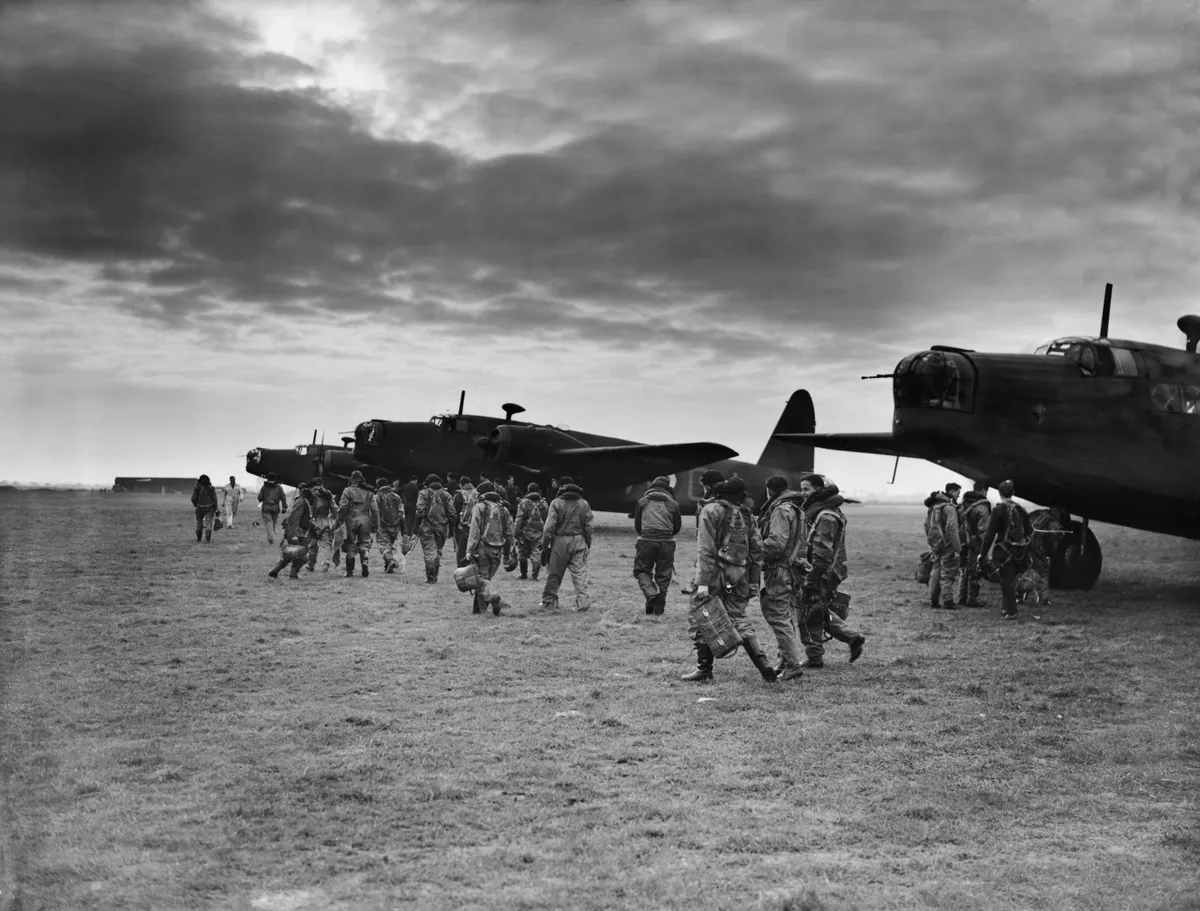
Bomber Command Digital Archive
This is a wonderful tool for anyone researching members of Bomber Command. All of the collections in the centre’s digital archive are described at item level, with both oral histories and written documents being transcribed, meaning names, dates and places are fully searchable.
Curator Dr Dan Ellin explains, “This is a living archive – more collections are digitised daily, and we are publishing about 200 new items a week. Our volunteers are currently transcribing pages from an operations order book, too, which contains the names of hundreds of airmen who served with 44 Squadron.
Collections that will be published in 2019 include James Douglas Hudson’s letters and prisoner of war newsletters, and Hedley Robert Madgett’s letters and diaries written during his pilot training in Canada and on his tour of operations.”
British Association for Cemeteries in South Asia
BACSA is redeveloping its website to make the most of its growing database of burial records. Visitors will be able to search photographs, burial records and cemetery condition reports.
BACSA is also awaiting some 3,000 photographs of the important Hosur Road Cemetery in Bangalore that will be uploaded to the database.
BNA plans to bolster its speciality titles, add more newspapers and pages from the Trinity Mirror archives, and forge “partnerships that will allow us to add an even greater variety of content”.
British Red Cross
British Red Cross Museum and Archives has already published a searchable database of its records of First World War Voluntary Aid Detachments (vad.redcross.org.uk).
This was joined in the autumn by a database of about 30,000 items held here, including letters, posters, photographs and films.
The organisation also has a three-year Heritage Lottery Fund grant to audit collections, which will enable it to improve its databases further.
This ever-growing database of statutory burial and cremation registers has some exciting additions planned for 2019, including Brookwood in Surrey – the ‘London Necropolis’ is the largest cemetery in the UK.
There will also be a million more burial and cremation records from South London, 750,000 from the Manchester area and 1.5 million from the Midlands.
This fresh-faced youngster from the National Library of Wales stable officially launched in November with almost 5,000 biographies of significant Welshmen and women.
The dictionary was first published in print in 2004, and this new online version is edited by Prof Dafydd Johnston of the Centre for Advanced Welsh and Celtic Studies at the University of Wales.
He says: “The Dictionary of Welsh Biography is a great resource for teachers, local and family historians, and anyone interested in our history.”
He adds that we can expect daily updates to the new website throughout 2019.
This free resource launched in the autumn, giving access to various employee registers and other material dating back to the early 18th century.
The parent collection includes documents, charts, photographs, registers and engineering drawings.
At present you can explore various examples, and there’s a searchable database of records from the Dublin Port ‘Name Book’ containing employees from 1906 to 1914.
The records of the Durham Miners' Association have been catalogued and the data is about to launch with an index of more than 220,000 entries.
There are also 44,077 photographs to view online, some National Coal Board colliery images in the wings, topographical images from the county libraries, and the Durham Light Infantry archives.
East of London Family History Society
Projects co-ordinator Gary Barnes says the society is converting work from the past 40 years into a members’ database. An index to transcripts of records from the Colney Hatch Asylum (1880–1920) is also being added.
Other projects include Metropolitan Police Handbook transcriptions, recording those injured or killed during air raids; a midwife’s records from the mid-1860s to the mid-1870s; and a Poplar Mortuary index (1911–1942), which often mentions where people would be interred.
East Riding Archives – What Was Here?
East Riding Archives is developing this website and a mobile app, which they hope to make available in the new year. Layers of historic information, including georeferenced photographs, will be overlaid on a modern map of East Riding.
Archivist Sam Bartle says: “Our app users will get push notifications to tell them when they’re in the vicinity of a historic photo location, so they can see ‘what was here’ in their surroundings.
"My hope is that it will gradually develop as a community project in which new content is crowdsourced from users and we’re able to upload more and more of our existing collections, so that we get a really good range of historic material, including audio and video.”
Families in British India Society
As the FIBIS surname database heads towards the two million mark, various innovations are on the cards – videos of talks from the 2018 conference will soon be added to the Members’ Area, and the society’s publications will be made available for purchase in digital format.
FIBIS has also received a further grant from the Pilgrim Trust, which will enable it to continue photographing graves in India for the Cemeteries Project – adding the transcriptions to the FIBIS database.
This sits alongside the Times of India transcriptions project (arrivals and departure lists), and the Railways Project, which will see expanded offerings: wiki.fibis.org/w/category:railways.
The world’s biggest family history website will continue its work with local archives throughout the UK and Ireland to preserve important church and other family history records.
Vounteer indexing projects going online for 2019 include parish records from Shropshire, Hereford, Cumbria, Cambridge, and Huntingdon.
New online capabilities will include interactive ways of learning about your name, fun tools where you digitally insert yourself into traditional clothing relating to your heritage and a ‘Record My Story’ tool that enables you to record audio/text stories and memories from you or family members. Meanwhile the Family Tree will be expanded to include FAN relationships – Friends, Associates, and Neighbours (FAN).
And of course keep your eye out for news of RootsTech London 2019, being held 24-26 October 2019 at the ExCel Centre.
The partnership with Living DNA will be the main focus for 2019. The testing kits (inset) launched in November 2018, and Findmypast will be developing and expanding on this throughout the year.
It’s also launching an intuitive matching system, allowing researchers to connect more easily with living relatives. You can also upload DNA test results from other providers, including 23andMe, AncestryDNA, Family Tree DNA and MyHeritage.
In terms of data, the Kent and Surrey collections are due for substantial updates and there are military records on the way, plus English parish records, Catholic records and census substitutes (including more electoral registers). Also a number of Scottish collections will be released throughout the year.
Alongside developing the online tree, Findmypast is creating a companion app to help customers curate, view and share their research, and improving the search hints with more record sets.
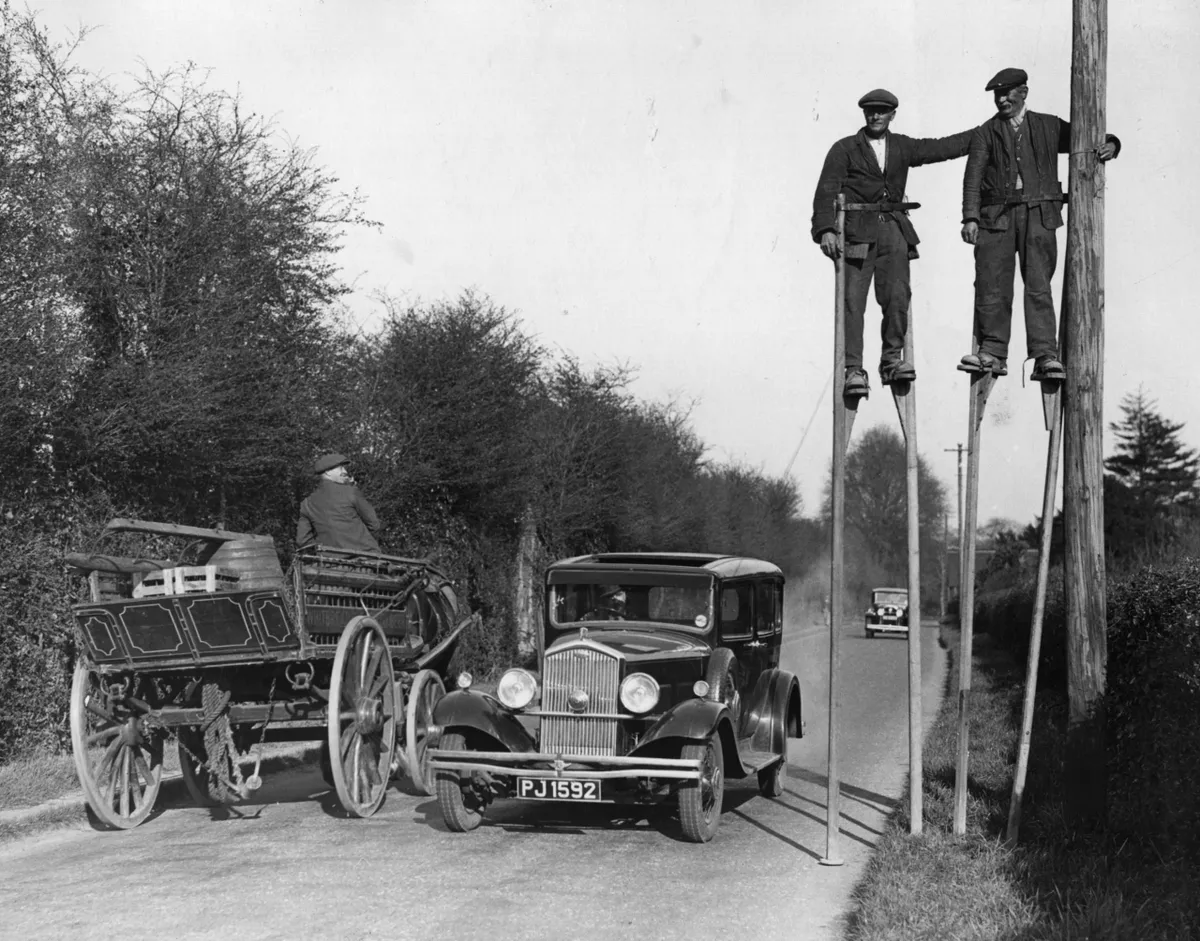
Forces War Records, which hit the 20 million records milestone in 2018, has a target of 25 million names by the end of 2019.
These will be fuelled in part by a partnership with the National Library of Scotland to transcribe its First World War casualty lists compiled from daily and weekly War Office lists – the team expect to reach more than two million records from this collection alone.
Also look out for more Naval record collections and medal rolls.
At the 2018 conference trustee Graham Hart reported that the FreeBMD arm will soon be adopting the fresh new design of its sister sites FreeCEN and FreeREG.
There are somewhere in the region of 270 million ‘distinct’ records on FreeBMD, and the site is still expanding at a rate of roughly 600,000 a month, with a daily search rate of approximately 130,000. And, by the end of 2018 or early 2019, the ‘first scan’ of data up to 1984 will be completed.
This popular resource was knocked offline by a cyber attack in 2017. The extended hiatus is coming to an end, with a new and improved version due back on our screens by January 2019.
There will be greater functionality with access to full transcripts, allowing users to work across returns and counties, and references to the archival source of each record. You’ll also be able to search by keyword, or by the number of hearths.
In 2019, as a result of partnerships with Miriam Weiner and the ‘Routes to Roots’ collection, Gesher Galicia, Beit Hatfutsot, Hesed Shel Emet and others, JewishGen will make available a host of information that will be incredibly valuable for Holocaust and other research, allowing family historians to understand more about their relatives’ lives.
Volunteers at the home of East Sussex Record Office are transcribing the burial registers of Brighton-based undertakers Attree and Kent (1824–1991).
Records of patients at Sussex County Lunatic Asylum (1859–1903) are also being transcribed, while other volunteers are working on a local surgeon’s notebooks.
Know Your Place - West of England
The digital heritage mapping resource is being enhanced.
Digital archivist Claire Collins says that staff are working on expanding the First World War layer that launched in spring 2018.
It uses poppy icons to mark the address of a soldier wounded or killed in the war, as recorded in the local press.
The entries at present are focused on Cheltenham, but the Gloucester area will be added in the new year.
A ‘Women’s Suffrage’ layer is also coming, starting with Cheltenham, Cirencester and Stroud.
It will give information about male and female supporters of women’s suffrage taken from contemporary newspapers and censuses.
Leicestershire County Council has slimmed down its website in recent years in order to make it easier for residents seeking to pay council tax or find out about other council services. However, this resulted in a fairly meagre online presence for the record office.
Now a new dedicated website is due to launch in the next couple of months.
Under ‘Our Resources’ there will be a page for family historians, detailing records available online as a result of the partnership with Findmypast (the digitisation has finished now, and some records including Bishop’s Transcripts will be added soon).
There will also be information about searchable databases, and First World War resources produced by the record office working with the council’s Century of Stories project.
Senior archivist Jenny Moran says: “We’re hoping to provide researchers with a better facility for finding our online resources and booking our outreach events. We’re giving the website a vintage feel by using archive photographs to showcase our resources.”
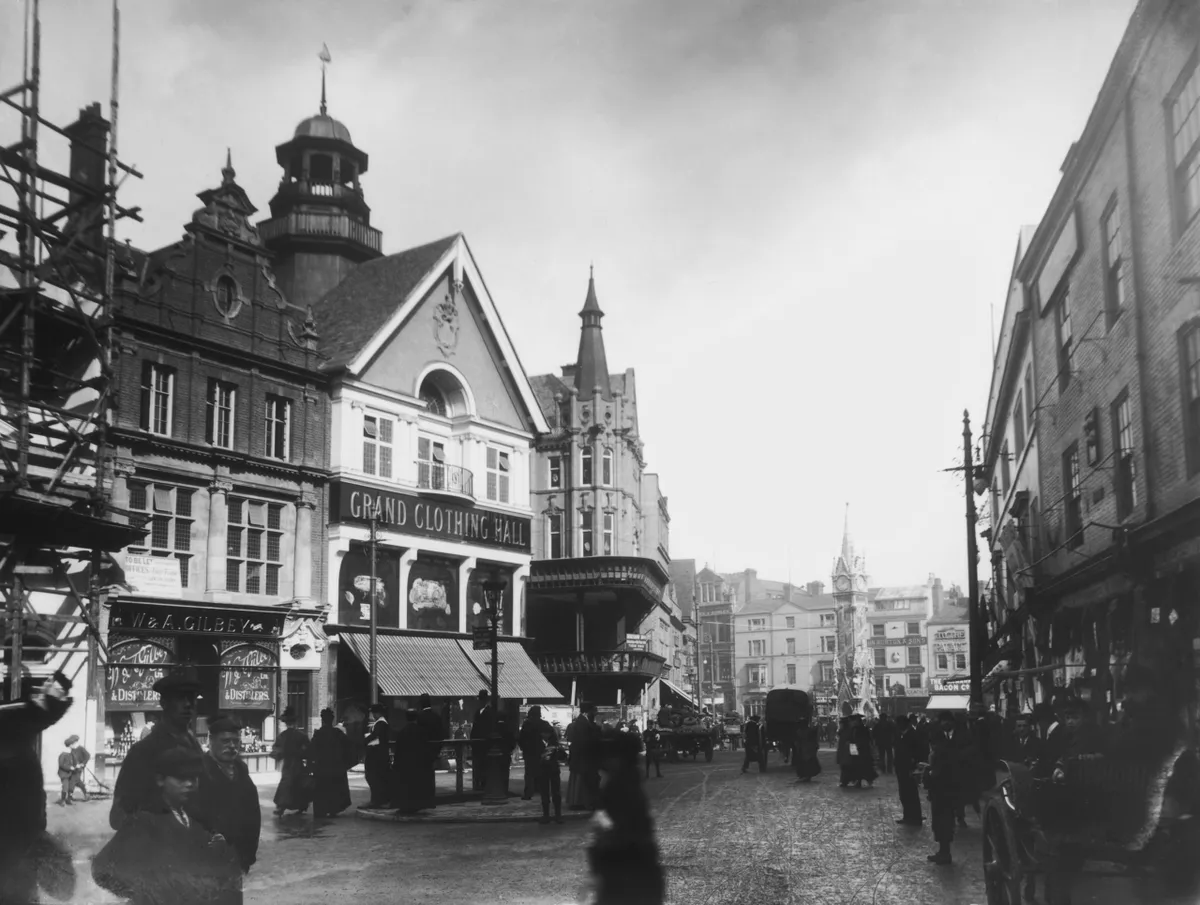
MyHeritage offers online family trees, data and a DNA testing service.
The latter is set to be improved by features that will provide richer results, and the site is currently planning the launch of a new tool that will “revolutionise the ease with which people can make new discoveries”.
This will involve “billions of data points” including family trees, records and DNA.
Staff also expect the number of MyHistory users to exceed 100 million in 2019.
The project to catalogue at item level over 300,000 miscellaneous Navy Board in-letters from 1650 to 1837 (ADM 106) is due to be completed in 2019.
The Navy Board looked after docks and the building of ships as well as paying warrant officers and dockyard workers.
The detailed catalogue entries include any names mentioned and can be searched via TNA’s online catalogue.
Other cataloguing projects that are due to be completed in 2019 include criminal petitions and clemency (HO 17) and WW2 Prisoner of War index cards (WO 416).
There will be also be improved guides to a number of record sets including Court of King’s Bench, intellectual property, the Old Bailey and overseas births, marriages and deaths.
The National Archives of Ireland expects to launch a new version of its website in January 2019.
The site will be more user-friendly and integrate better with the online catalogue. The search page will also be redesigned.
The maps team at the NLS is publishing online all out-of-copyright Ordnance Survey 1:10,560 and 1:10,000 maps of England, Scotland and Wales between 1945 and 1968.
Map curator Christopher Fleet says that they hope all of the Scottish sheets will be online by the end of 2018, and that English and Welsh sheets will be uploaded by spring 2019.
He adds: “This series is the main topographic authority for postwar Britain. It was the most detailed scale of OS mapping to cover all of the country, although urban areas were covered at more detailed scales.”
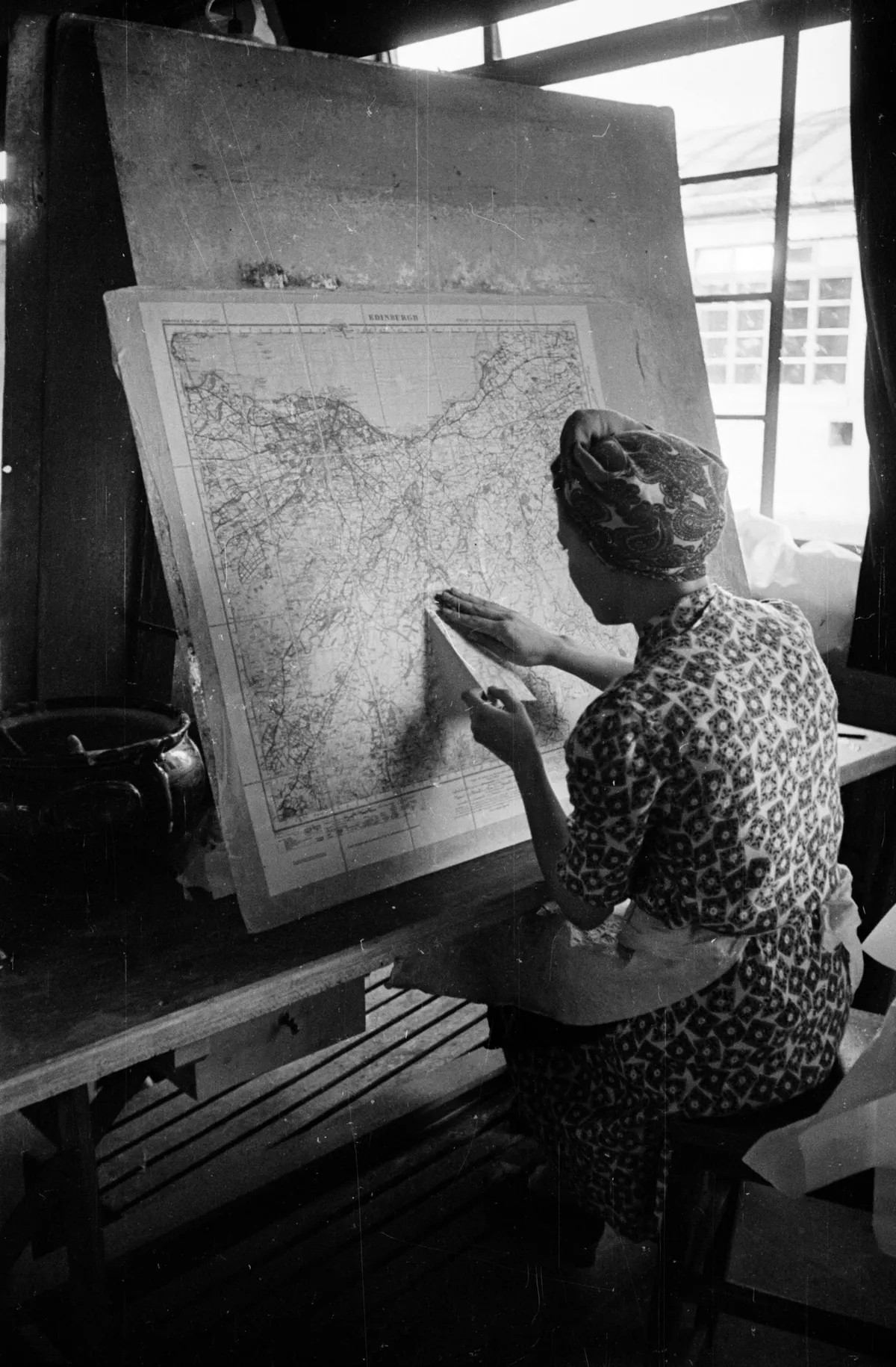
The National Library of Wales website has now been significantly improved, and in 2019 the newspapers hub, where you can already search more than 1.1 million pages, will get more issues covering 1910–1919.
Cardiganshire Great War Tribunal (Appeals) Records have been digitised and transcribed and will be online in 2019, as will more St Asaph wills (1557–1649) via the probate hub.
Anyone with Welsh kin should also visit the Dictionary of Welsh Biography.
The NRO’s site has recently been redesigned, and staff are digitising almost 4,000 parish registers. These are volumes that do not appear on subscription sites, although they hope to license them in the near future.
This equates to over 40 per cent of all the registers held by the NRO.
Meanwhile volunteers are indexing marriage licence bonds, which will soon join the Norwich archdeaconry licences that are now indexed and on the online catalogue.
Volunteers are also indexing Norwich building control plans (1894–1945), which will be searchable via the website.
The website has lots in the pipeline for 2019, including Scotland-wide School Leaving Certificate Examination records, starting in 1908; an updated asylum index to the next volume of the General Register of Lunatics series (1915–18); and records from the Inspector of Anatomy for Scotland.
The site has a range of material covering police, victims, offenders, prisoners and prison staff.
In 2019 it will be adding records relating to low-level offenders.
There will also be articles from regional archivists talking about their criminal collections, as well as features on individual institutions.
The Peterloo Massacre took place on 16 August 1819 in St Peter’s Field, Manchester, when cavalry charged a crowd demanding parliamentary reform.
A programme of work from Manchester Histories and the People’s History Museum is underway to commemorate the bicentenary.
As well as a host of events in the city, a new website will “place users in the setting of Peterloo”.
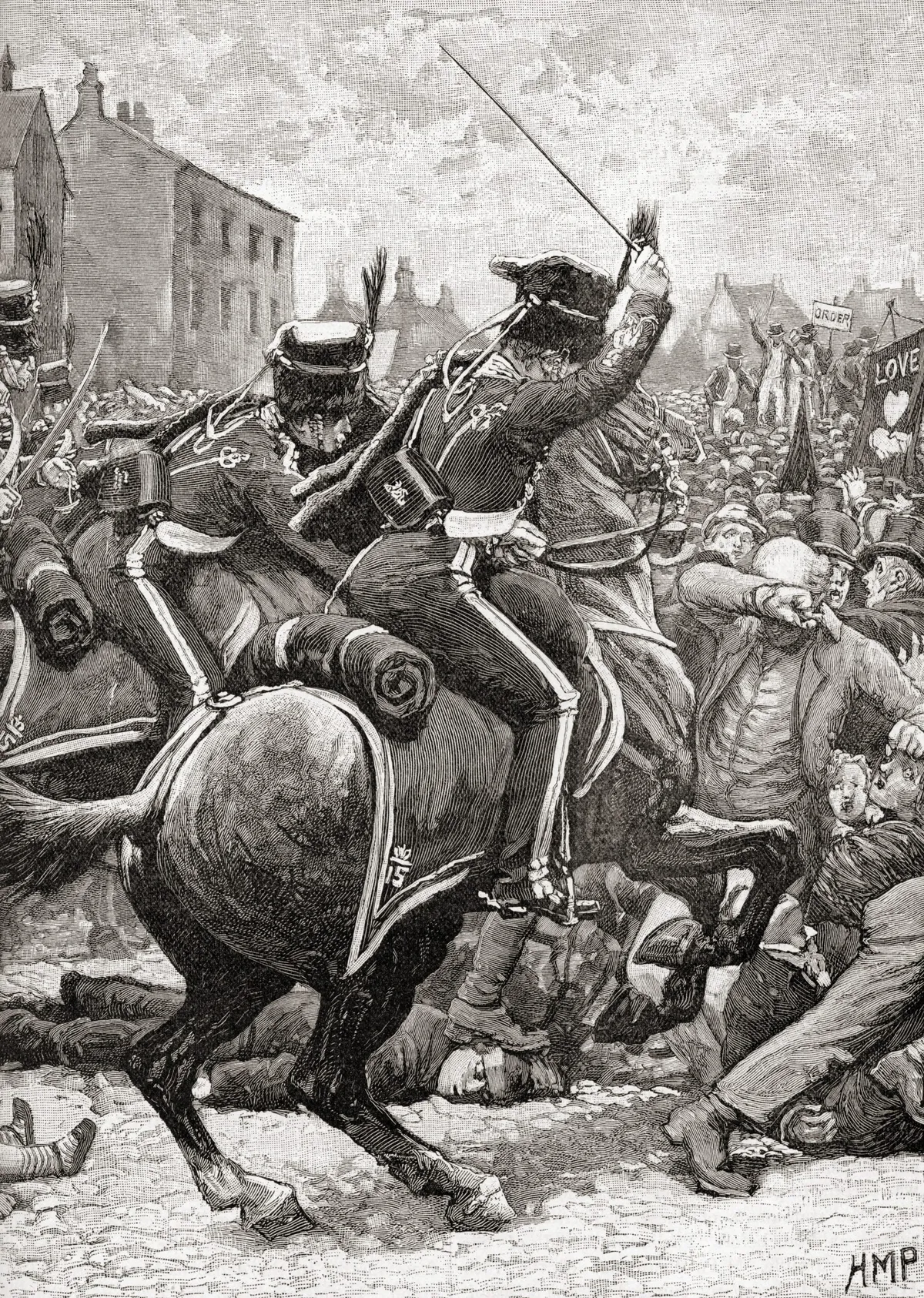
Public Record Office of Northern Ireland
Online resources developed to mark the centenaries of the 1918 Representation of the People Act and the end of the First World War include: a mapping application, exhibition and digitised diaries exploring the history of suffrage locally; an index to Belfast’s Royal Victoria Hospital war casualties register containing names of more than 700 soldiers treated between 1914 and 1916; and digitised absent voter registers for the counties of Armagh and Derry/Londonderry, including an index of about 8,500 names and regimental information for those on military service.
‘How to’ videos that explain using the Historical Maps viewer and valuation revision books applications will be available shortly, and PRONI continues to add talks to its YouTube channel.
Working on the railways was one of the most dangerous occupations of the early 20th century.
This Portsmouth University and National Railway Museum project details accidents to railway staff, including who was involved, where, when, what happened and why.
At the moment about 4,500 cases are freely available from the website, along with lots of other resources about railway work and safety.
In 2019 volunteers will be adding roughly 7,500 more cases from the period between the wars, as well as continuing work on a further 35,000 covering the late 19th century to 1930.
Next year the website will upload civil birth, marriage and death records from the counties of Antrim, Wexford, Sligo, Cavan, Offaly and Clare, as well as more additions that staff are not yet ready to announce.
They also plan to add new features designed to make data much easier to search.
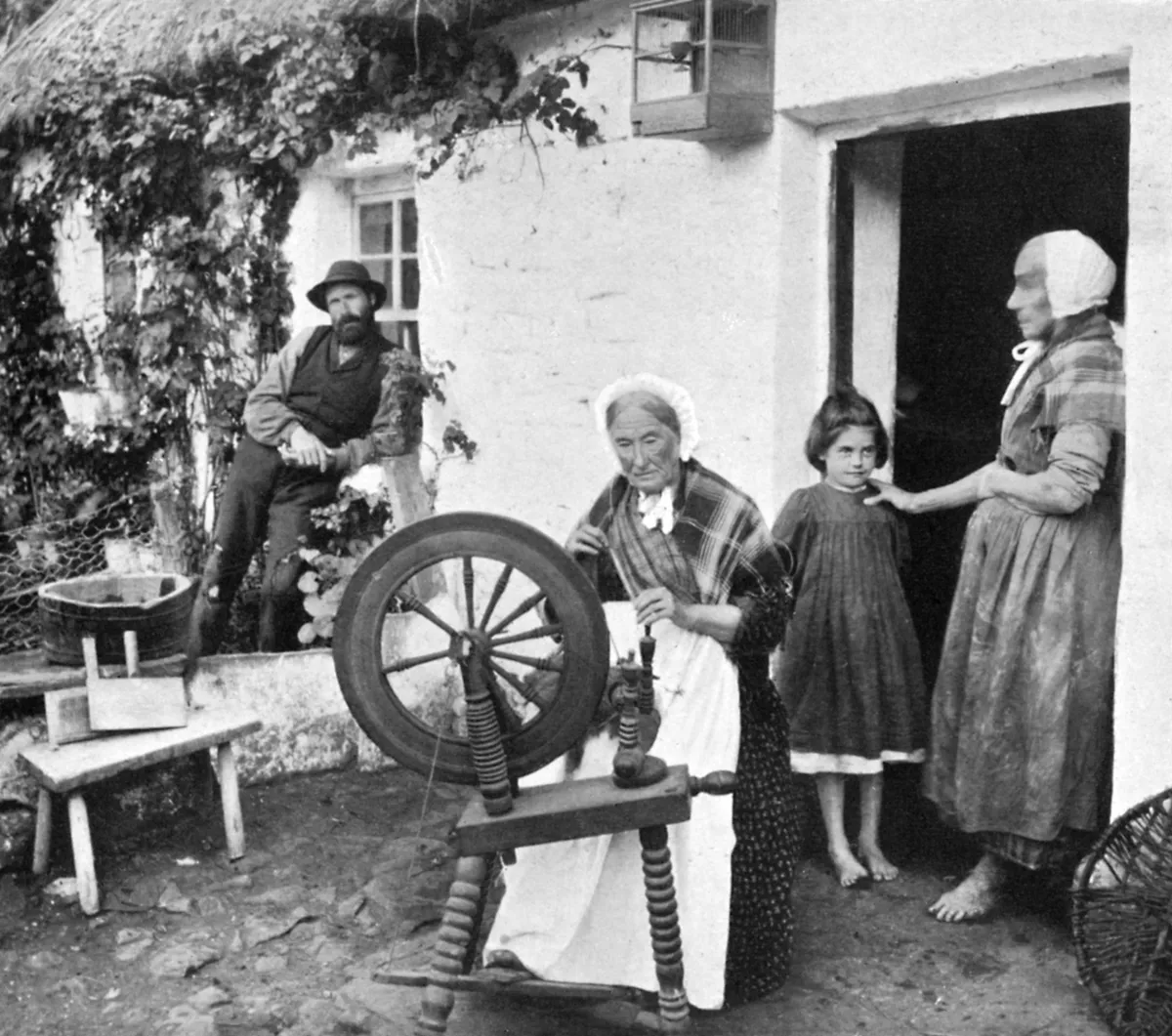
Royal College of Surgeons of Edinburgh
This new website from TownsWeb Archiving launched at the end of November.
Users can search and study digitised documents and photographs from the historic archive, which links to a database of surgeons containing more than 19,000 records dating from 1505 to 1918.
Users are able to purchase digital downloads.
Curator Richard Callaghan started work on the Redcap database in 2011, and it is finally due to launch in March 2019.
Thanks to volunteers, the database holds information on 24,500 soldiers serving before 1920, and 81,000 who served between 1921 and 1950, which comes from various sources including order books that detail the routines of the corps from its formation in 1855 to the beginning of 1919.
Another volume details about 4,000 men who were serving in the Military Police when the Army underwent a renumbering system in 1921.
Richard says: “These volumes give more personal details including place of birth, trade, age on enlistment and discharge information.
"Three seniority rolls provide information on the Military Mounted and Military Foot Police before 1912.”
The website will launch with full records and photographs pre-1930, and partial records (name, rank, number and unit) post-1930.
The association’s website has all sorts of information about the history of the regiment and its predecessors, including an innovative First World War roll of honour that went live at the end of 2018.
The digital archive of the Royal Military Academy Sandhurst (RMAS) launched in 2016.
Now the website, which allows users to search and download original records, is going through a redesign by the TownsWeb Archiving team.
The site will be made more mobile-friendly, and browsing will be improved so that users can find cadets and staff more easily.
In 2018 Scottish Indexes added paternity cases from 20 Scottish sheriff courts, increasing the total number of cases indexed to nearly 30,000.
The index to paternity cases heard at the Stirling (1835–1919) and Stornoway (1829–1919) sheriff courts will follow early in 2019, with more to come from Campbeltown, Wick and Dingwall throughout the year.
Also the site now has more than 150,000 records in its Scotland’s Criminal Database collection, which launched in the autumn of 2018, and will be adding to the existing prison register section throughout the year.
Genealogist Emma Maxwell says: “Work has already begun to index Edinburgh lock-up house records (1826–1936), and we hope to have these online by spring 2019.” S
taff are also working on a new ‘Register of Sasines’ section, which will explain how researchers can use Scottish property records to trace the history of their family or their house.
ScotlandsPeople plans to expand its website and add “a range of further materials and records in the coming year”.
A spokesperson confirmed that these will include totally new record types covering selected areas of Scotland (rather than Scotland-wide), as well as expansions of existing record sets.
There will also be improvements to the website’s search functions.
The Society of Genealogists (SoG) is building on the success of its associate membership offering, created a year ago for those who interact mostly online.
SoG genealogist Else Churchill says: “The members’ area of the site has been enhanced to add more educational content, talks and guides, and a new members’ forum is intended ultimately to supersede our RootsWeb mailing list.”
More lecture content and library data will be added too.
The big news for 2019 is an Augmented Map Viewer that will enable family historians to map their ancestors’ homes from the 1830s up to the present day.
You’ll be able to locate modern and bygone streets, and view the location of forebears from historic records.
This tool will launch as the new enhanced method to view the Lloyd George Domesday Survey collection, with rate books, map records and more additions arriving soon.
Other records on the way include seamen records, naturalisation records, parish records, criminal and asylum records, electoral/poll and voter lists, and a “major release” of Second World War material.
This British Library project, supported by the Heritage Lottery Fund, seeks to digitise sound archives from 10 regional repositories.
Norfolk archivist Hannah Verge says they are gearing up to start digitising approximately 15,000 recordings from the east of England.
Keep an eye on the library’s website for more news and updates.
Many VCH publications have been digitised and available online for some time, but 2019 will see the launch of a new smartphone app.
The app will present the VCH entries topographically as pins on a UK map.
The advantage of this is that users will be easily able to roam between the histories of adjacent places, which may have been published in different volumes.
The app is likely to be called ‘English Places’, with a map interface using the First Edition Ordnance Survey.
More datasets, such as the Royal Commission on the Historical Monuments volumes, being added later.
Warwickshire Bytes: 100 Stories Of County History
Heritage and Culture Warwickshire is looking to recruit remote volunteers to help index the county’s collection of depositions made to quarter-session courts between 1828 and 1918.
These names, residences and occupations will form a searchable online database of records, currently only available to view in person.
Meanwhile experienced researchers are also needed to track down individuals exempted from military service, to find out what happened to them post-1918.
The most interesting cases will be used as part of Warwickshire Bytes, a digital resource that will celebrate 100 individual stories of living, playing and working in Warwickshire, and will feature on the Our Warwickshire website.
If you want to support the Warwickshire Bytes team, you can help them transcribe records as part of our Transcription Tuesday volunteer event.
If you wish to volunteer for remote research, email bytes@warwickshire.gov.uk.
Wellcome Library on the Internet Archive
More archives are adding records to the Internet Archive, making it an essential free resource.
The Wellcome Collection, for example, has added its 65,000-strong medical health officer reports and lunatic asylum reports.
West Glamorgan Archive Service
West Glamorgan launched digitised First World War rolls of honour just as we were going to press.
Archivist Andrew Dulley says: “We hold a number of rolls that once hung in pride of place on the wall of a chapel, church or local works – many of them are highly decorative, illuminated and well-drawn.
"After the war they were often stuffed into attics and storage cupboards, and have found their way to us when their parent institution gave us their records.”
There’s lots on the digital horizon for West Yorkshire, including a new tithe maps hub.
The site will allow users to explore tithe maps of Bradford from the 1800s, zoom in and out, compare them with maps showing the area today, and access details of who owned and occupied each plot, and what the land was used for.
There’s also a new resource from the West Yorkshire Archaeology Advisory Service, supported by Historic England, which undertook a Historic Landscape Characterisation Project between 2011 and 2017, covering Bradford, Calderdale, Kirklees, Leeds and Wakefield.